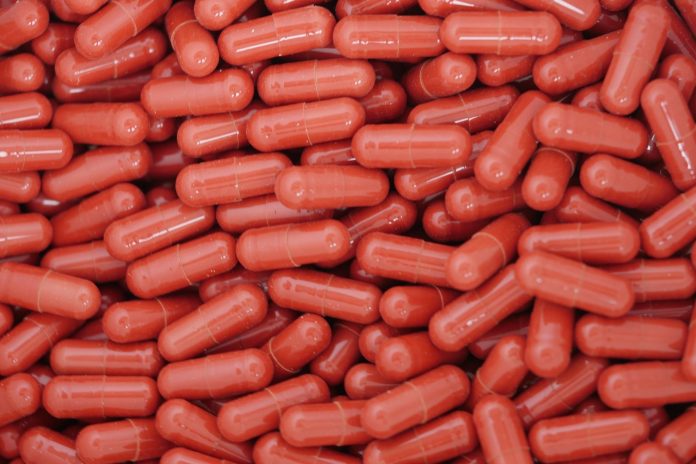Australia has closed a deal for 300,000 courses of an antiviral pill showing promising signs of slashing COVID-19 deaths and hospitalisations.
Molnupiravir is still being trialled in the US and is yet to gain regulatory authorisation.
But the federal government has reached an agreement with pharmaceutical company Merck Sharp and Dohme to supply 300,000 courses should the pill be given by green light by Australia’s medicines regulator.
It could be made available as early as the first quarter of 2022.
Prime Minister Scott Morrison said the drug would join other COVID-19 treatments including sotrovimab and remdesivir already available in Australia.
“While our vaccination rate continues to climb, we’ve been investing in and closely monitoring research into COVID-19 treatments and we are securing supply of promising treatments,” he said.
Molnupiravir is taken twice a day for five days by adults with mild or moderate disease. It does not need to be refrigerated.
The Therapeutic Goods Administration in August gave the pill “provisional determination”, the first step to apply to register the pill for use in Australia.
A final application is expected to be submitted shortly.
It follows trials announced by Merck showing molnupiravir reduced hospitalisations and deaths by around 50 per cent.
Australia has also received 15,000 additional doses of sotrovimab, an antibody treatment used to stop the virus replicating.
The national stockpile of the drug, administered by intravenous infusion within five days of patients developing symptoms, is expected to exceed 30,000 doses this year.
It has been shown to reduce hospitalisation or death in patients with mild or moderate infections and who are at high risk of severe illness.
Vaccines remain Australia’s first port of call for battling coronavirus, with the country expected to hit an 80 per cent first-dose rate for over-16s this week.
Currently, 56.9 per cent are double-dosed, with 79.6 per cent having received their first dose.
University of South Australia epidemiologist Adrian Esterman emphasised the importance of new treatments.
“There has been not much emphasis placed on research into treatment since the start of this pandemic,” he told AAP.
“Even with 100 per cent of the population fully vaccinated, there will still be virus circulating because none of the vaccines is 100 per cent effective against transmission.”
Victoria recorded new 1377 local cases and four deaths as Melbourne became the world’s most locked down city following 246 cumulative days of stay-at-home orders.
NSW recorded 623 new cases and six people died ahead of the planned end of lockdown for fully vaccinated residents in a week.
That state has double-dosed 67.5 per cent of its population aged 16 and older, while Victoria has a 52.6 per cent full vaccination rate.
The ACT recorded 28 new cases and two more deaths, taking Canberra’s death toll since the start of the pandemic to eight.
Queensland recorded one new infection in the community.
Its full vaccination rate of 48.7 per cent is the second-lowest in the country ahead of Western Australia (48.5 per cent).





